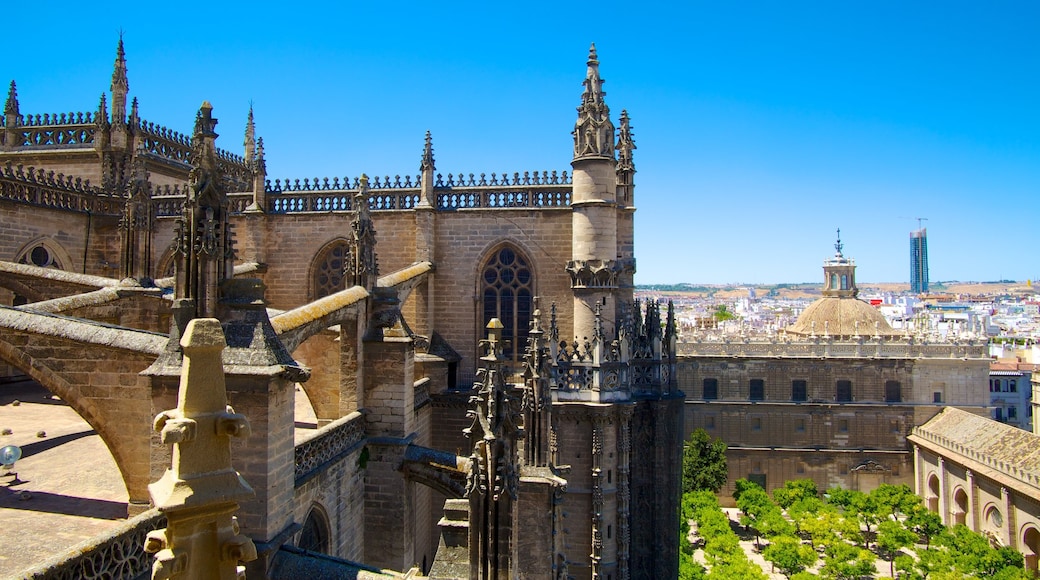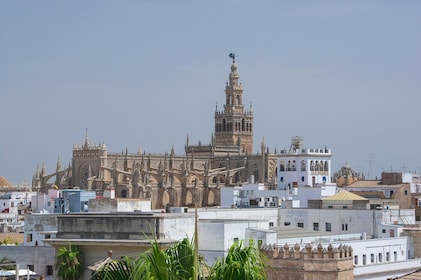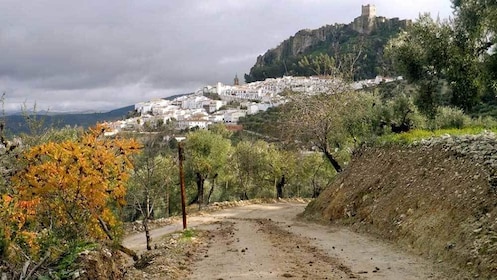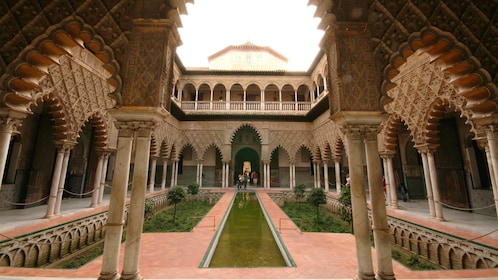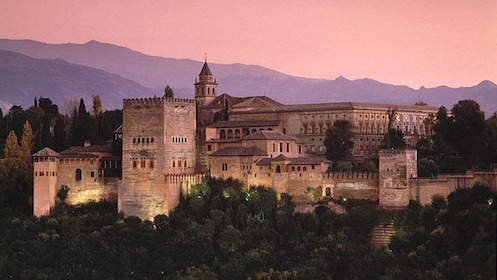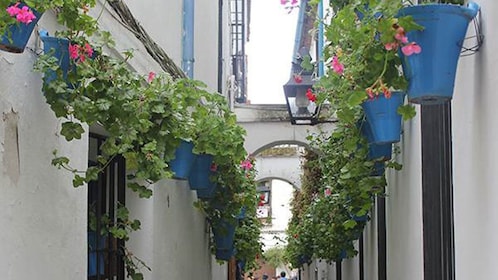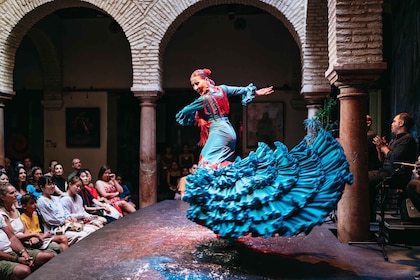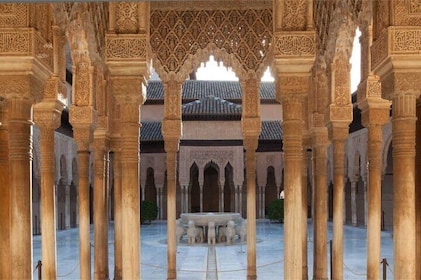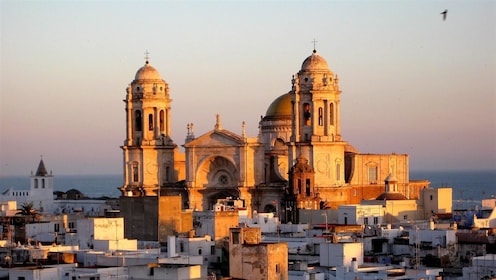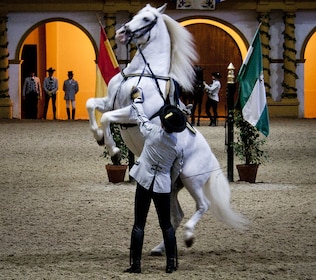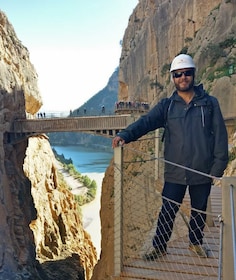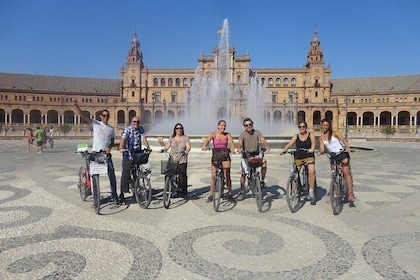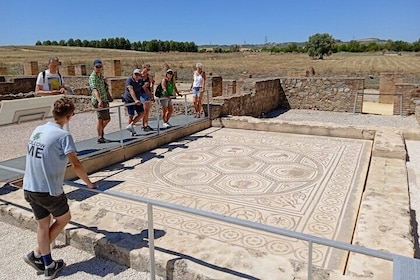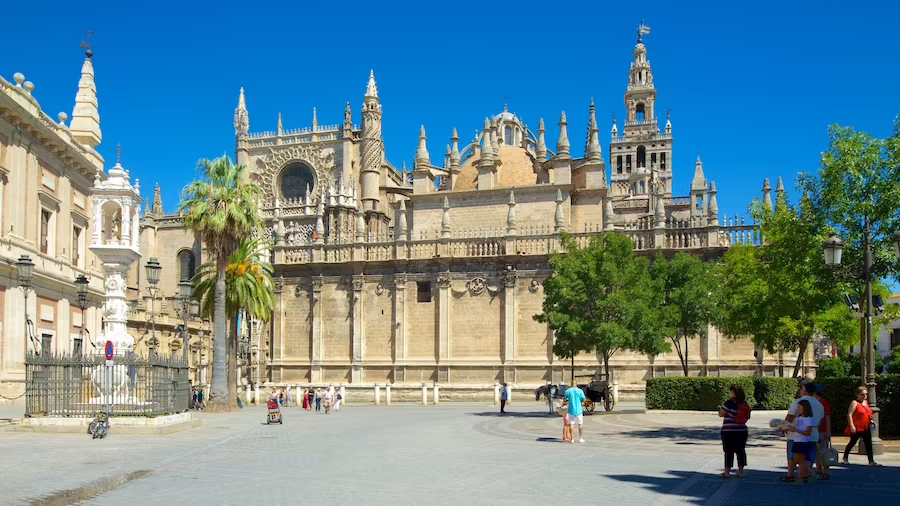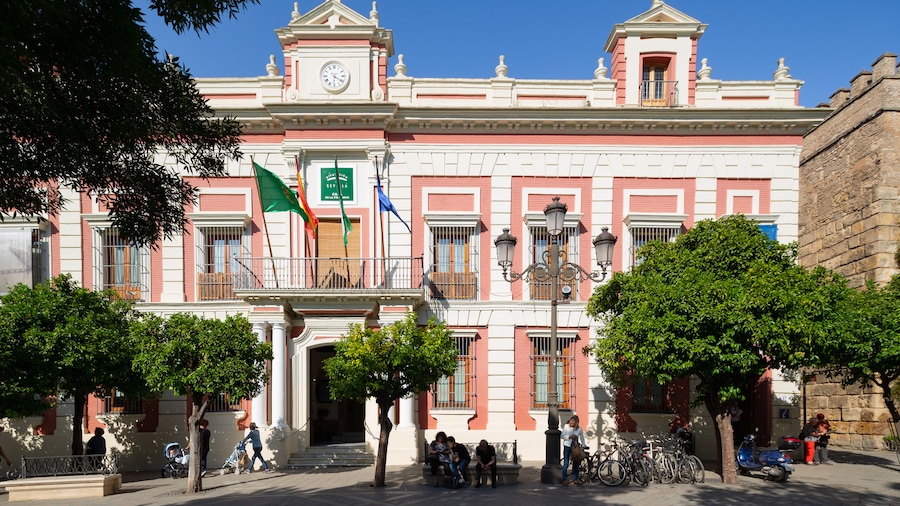Now the bell tower of Seville Cathedral, this striking landmark began life as the minaret of an Almohad mosque.
The Almohads, the Moroccan dynasty that occupied Spain during the 12th century, built this prominent religious monument between 1184 and 1196 on the site where Seville Cathedral stands today. Following its construction, it served two principal purposes: calling the faithful to prayer and acting as an observation point over the city. One of three great minarets constructed by the Almohads, it is considered to be the finest of all, as well as an excellent example of Almohad architecture.
Following the Christian conquest and siege of Seville in 1248 during the period of the Reconquista, the Giralda was seized from the Moors by the Christians, who made several additions to it during the Renaissance period. These additions include a five-level belfry, designed by Spanish architect Hernán Ruiz, and a bronze statue of a female figure with a shield, which is both a symbol of the Christian faith and a weather vane.
Looming over Seville Cathedral at a height of over 100 metres, you will be able to spot the Giralda well before you reach it. Admire the workmanship of the renaissance additions to the tower, high in the sky. Up close, you will be able to appreciate the intricate trelliswork and other features of the lower Almohad section of the tower.
Enter Seville Cathedral and make your way up the ramps to the top of the tower. It was built with ramps, rather than steps, so that the person calling the faithful to prayer could easily ride a horse up to the top. When you reach the summit, you will be rewarded with panoramic views of Seville. Keep an eye out for the sights of the city, such as the Royal Alcázar and the Plaza de España.
Situated in the historic district of Seville, the Old Town, on the east bank of the Guadalquivir River, the Giralda is close to a number of other key attractions. As part of Seville Cathedral, the tower has the same opening times as this attraction. The entrance fee for the cathedral includes access to the tower.
